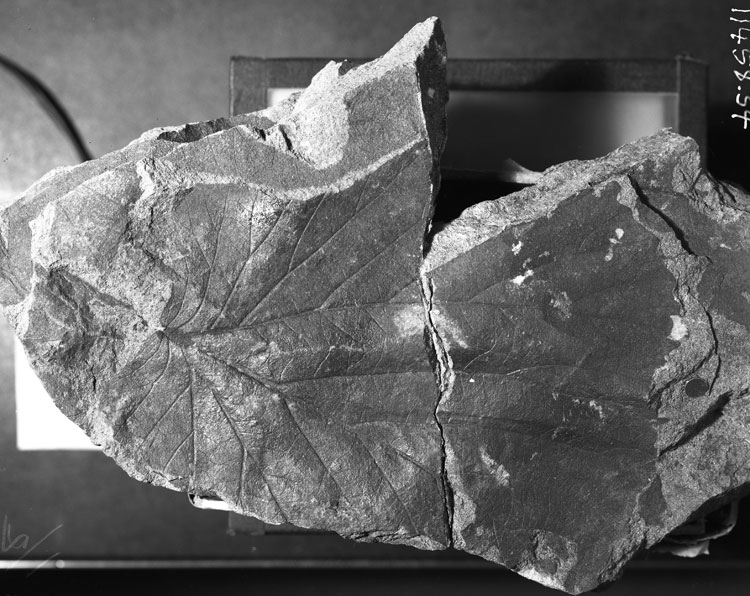Locality
USGS11614
Lat. 60° 36' 36"N Long. 164° 49' 18"W
Baird Inlet (C-8) Quad. Nelson Island.
Description
Leaf: simple; asymmetrical (?); wide obovate (?); apex missing but probably obtuse or rounded; base auriculate; margin dentate except at the base where entire, teeth with obtuse angular apices with a swollen gland or lacuna terminating the tooth median vein, wide shallow rounded sinuses, teeth irregular in size and spacing; venation suprabasal perfect marginal actinodromous; primary midvein moderate more or less straight but curving to one side near the apex, pectinal veins arising from the midvein at an angle of 35-45° and uniformly shallowly curved; superior secondary veins arising from the midvein at angles of 35-45° and uniformly shallowly curved, often branching at two-thirds or more of the distance to the margin, abmedial veins numerous, uniformly shallowly curved and arising at an angle of approximately 45°, often branching, terminating in apices of teeth branches; some also given off at 45° on the admedial side of the pectinals near the margin; a single pair of strong inferior secondary veins arises from the midvein directly below the point of departure of the pectinals and recurves before branching abmedially, basal to these are a double pair of weaker inferior secondary veins recurving into the basal lobes; tertiary veins between the secondaries moderate, percurrent, convex or nearly straight, arising with acute to right angles on both ad- and abmedial sides of the secondaries, sometimes branched; fourth order veins orthogonal.
Remarks
This leaf clearly shows hamamelid characters and is a good example of members of the 'platanoid' complex. While no leaves of this type have been reported from the Dakota Group, the general form is common in Hollick's (1930) specimens from along the Yukon River under the genus name Crednaria. A distinguishing character of this genus is the truncate to shallowly lobate base in contrast to the attenuate or peltate forms ascribed to 'Platanus' or Pseudoprotophyllum. The apparent asymmetry is also common in Crednaria. Of Hollick's species, the one that agrees most closely with the above description is Crednaria inordinata (Hollick, 1930, p. 86; Plate 56, Fig. 3; Plate 57, Figs. 2, 3) and because of its large size could be referred to the variety maxima (Hollick, 1930, p. 86; Plate 58, Figs. 1, 2).
